
mediaho
-
Posts
1,482 -
Joined
-
Last visited
-
Days Won
1
Content Type
Profiles
Forums
Events
Posts posted by mediaho
-
-
Thanks! I'll be pretty busy for the next couple weeks but I'll grab another as soon as I'm free.
-
Second pass
That's awesome Ed. Its great to see you on TWO.Care to shed any light on how you handeled overloading the arm actions with the walk cycle? It looks really good.
I find that when I add a new Chor action (with "Add" blending) on top of a walk action that already has keyframes defined for the bones I'm animating in the new Chor action, it's a hit-or-miss affair. Sometimes it works well, other times I just end up reanimating the arms from scratch for the entire chor length in the new Chor action.
For the overloading actions, I just set the blend method to "replace" instead of "add." No need to fight the animation that was already there.
-
-
For 2_07_075, should I have kept my shot named "...take.mov" instead of "take1a.mov" "take1b.mov" etc. or was this WIP compiled before I added that shot?
-
That was bugging me too. I figured I'd try something a little different before I called it a night.
Pass 3
Quick render w/MP moblur
-
Thanks for the comments. I didn't change the framing because I thought that was done by someone else for the sake of continuity. No?
As for how TWO animation compares to 'Boids,' it's completely different. The characters on TWO are infinitely easier to animate - we had relatively basic rigging on the characters. AM is a lot more powerful now, too. I think we used v6 and 7. The file system is similar although using revision control is a lot more sophisticated and flexible than the FTP-synch we were using. The biggest differences for me is that I don't have to direct and manage anything here and I have 8 more years of animation experience.
I use held keys while I'm working just to nail down the poses and timing. After I get what I want from that, I move on to normal interpolation. The advantages are that you can see if a pose has time to read and if it flows well into the surrounding ones. All of the keyframes for a pose are on a single keyframe so it makes it easy to slide around the timeline to nail the timing.
As for lipsynch tips, I don't know. Use fewer keyframes than you think you need. Watch someone talk casually (turn on the news tonight and watch the anchor-person) and you'll see that they don't accent every syllable - many sounds are made between major 'key' poses. You should be able to get it to look decent using only the 'Sync' slider. Once that looks good, you can start refining the poses. Read 'Stop Staring' by Jason Osipa and memorize it. That's all I can think of at the moment. The project is up on SVN so feel free to check it out, although more will be done on the face in the next pass.
Speaking of, here's the 2nd pass.
-
-
Good call. In the first example, he is leaning on something and the second is an athletic pose. i was using those as examples of asymmetry, rather than just balance. You'll notice that I use diclaimers a lot above like "usually" and "often" since every rule has situations that don't fit. But they're generally good starting places:PS Ed, the last two silhouettes look off balance.[attachmentid=22516]
[attachmentid=22517]
Yea, the landing is awkward but there are other animtions it blends in and out of.
-
I just got done watching some of the newer WIPs and rather than trying to comment on them individually (I couldn't improve on robcat's comments anyway), I thought I'd mention some overall observations for some of you promising new animators.
* poses - Like Bob's tip above, "Animation isn't about movement. It's about holds." it's glib but it's extremely true. Your two biggest peaks to climb and build a bridge between are poses and timing. Timing as in - how long does that pose hold and read into the viewers mind before moving on to the next one. The timing of getting from one pose to another is definitely important but it only comes after you nail those first things down.
Which brings me back to blocking. I understand that it's unfamiliar for some people to work that way, but is worth learning because it will save you from the dreaded 'floaty' and awkward animations before you even get to the moving part, which some people erroniously think is the actual "animation."
Now, what makes a good pose?
* - weight and balance. Your body is heavy, your limbs are heavy, your head is heavy. Unless you're in an athletic or 'fight or flight' situation, for the most part, your muscles want to do a limited amount of work propping up your frame. So a pose has to feel 'comfortable' for the character. This doesn't mean to move things just a little from the default position - on the contrary, the default position is probably one of the most uncomfortable positions a character can be in because everything is so straight and linear.
When standing, the knees and spine are are generally bent somewhat to cushion the weight of your body. Usually the weight is on one leg while the other 'rests.' In that case, the spine often bends toward the side without the support to compensate balance and the hips are generally cocked up on the support leg side. Arms and knees are for the most part never fully or hyper-extended.
* - shoulders. When you move your bicep, you always move your shoulder as well. You should be able to draw a smooth, curved line from the base of the neck, through the shoulder, bicep, forearm, hand and (ussally) fingers. I usually see that curve being broken around the shoulder. Shoulders move quite a bit when the elbow starts moving upwards them, like when your hands are way above your head.
* - asymmetry - like the 'weight on one foot' example above, your left side almost never does the same thing as your right side.
I'm being pretty clinical explaining why a good pose is good but a lot of what makes an appealing pose just comes down to how it "feels." Here are a couple silhouettes from something I worked on recently.
[attachmentid=22509] [attachmentid=22510]
[attachmentid=22511] [attachmentid=22512]
[attachmentid=22513]
You'll notice in the first one that even though he has both hands on hips and feet planted, everything is curved and comfortable and asymmetrical. Don't be afraid to sometimes bend and twist things more than you think you shoud.
When you've got these things down, the moving or the inbetweening becomes a lot easier. So I'll encourage everyone again to try the blocking method with held keyframes and no interpolation. Then once that is looking good, you can apply some of this knowledge to the inbetweening stage. If you find this helpful, I'll post some more tips on posing as well as 'tweening and acting in the coming weeks.
-
I did this shot when Bob was on the project. I love what you've done with it, Yves.
For the record, having the knees bend the wrong way was a conscious choice on Bob's part.
-
I read a few books on acting like True and False: Heresy and Common Sense for the Actor and Sanford Meisner on Acting. They are great books and very helpful but the whole acting thing never really clicked for me until I read A Practical Handbook for the Actor. It's a very small, cheap workbook that plainly gives you the right questions to ask yourself when trying to inhabit a character. After I read it, I had to go back to the other books because now they actually made sense. I recommend it and the Meisner book (as well as Acting for Animators of course) to everyone interested in acting.
-
http://www.hash.com/users/ed/temp/TWO/1_03_25-take.mov
Can't seem to add this as an attachment for some reason.
Latest version. Still much to do but this is the first pass out of blocking.
Jim, I hear you about the wink. I wanted an extra beat in there when I was working on it. I started the wink a little earlier hoping it would read better. I'll leave the decision as to whether or not it was successful to Rhett. If not, I'll go in there and stretch out the pause myself.
-
When someone is trying to keep balance, they're usually moving their hips more. If you stand on one foot, you'll see that you can actually move your hips quite a bit but you always try to compensate the shift in your center-of-mass with your upper body (usually) by keeping your head over your planted foot. Timewise, your hip movement would be a reaction to the direction the axe leans. So, the axe would begin to lean in one direction, then the hips and foot (axe's base) would move out in the same direction a little further to get leverage on the opposite side, and the shoulders would try to remain over the planted foot (or slightly back, depending on the weight on the axe on his raised foot). There should be a definite arc running from the foot through the hips to the head. And you can get pretty crazy with that arc depending how exaggerated you want to be.
So, it doesn't have to be a lot of movement, but it does have look balanced and there should be a solid reason for each movement. Actually, that pretty much goes for all animation.
-
-
hey Ed, can you give us amateurs a idea how long you get in hours to do a scene like this on a standard production?
including facial animation, which would might be done by someone else normally but since we are jack of all trades, this could give everyone some idea how long it should take if you are getting a regular wage as a animator.
if anyone else has some input, please include it. we are learning as we go.
Well, since I work in games, I never get to work on things like this in any kind of "standard production." It's usually these kind of casual collaborative projects. I'd say this shot probably took around 5 or 6 hours over the course of 2 non-consecutive days.
I'm not familiar with any kind of production pipeline where the lipsynch is done by a different person than the skeletal animator. It's all part of the same animation. In fact, I think that would be a terrible way to work. The lipsynch and other facial animation is integral to the performance.
-
Sure. When I got the file, it had the camera and objects already in the scene and had an Action file holding the audio. The action was already applied to Scarecrow and set to begin in the choreography at frame 100 (starting later gives you some wiggle room if you find you need some frames in the beginning)
The next step is to read the script and listen to the audio. Over and over and over again. Before I move on, I have to see the character acting out the sequence. I have a very good idea of what I want to do before starting the first pose. Here's how the script reads:
Next, I start blocking out my first starting pose at frame 100 in the choreography. If the scene before this was already done and had Scarecrow in it, I would use the last pose from that scene to keep continuity. In this case, the previous shot is of Tinman so that wasn't a problem. Once I had that pose keyed, I selected "Bones" from the choreography action (in the project workspace) which displays all of the character's bones in the curve editor. Then I select all of the keys in the curve editor, right-click and select Curve -> Interpolation Method -> Hold. This way, I don't get any floaty actions between key poses as I'm working. It should make it the default keyframe setting at that point so I don't have to keep doing it. The action won't be very smooth but rather blocky, hence "blocking."SCARECROWHmm? A traveler? Very interesting…
TIN WOODMAN
What is?
SCARECROW
Well… to find someone in Oz who loves to travel, especially with all of the dangers and hardships about.
CU SCARECROW winks because he can tell that the young boy is exaggerating the truth. TIN WOODMAN notices the wink while SERVANT is handing his axe back, and acknowledges that he understands that Woot may simply be a young boy and not an adventurer.
The next step is simply to lay in the poses. I don't worry too much about timing at this point. I just lay the poses in and then drag the keyframes to the right spots when I'm ready. Normally, I would do the lipsynch last but as I mentioned above, I worked on it simultaneously with the poses.
Now, one thing I did was to do the skeletal action as a choreography action and the lipsynch in a reuseable action. I won't be doing that any more for a couple reasons. Firstly, it was a pain to go back and forth between two windows where the frame range was 0-103 in the Action and 100-203 in the cho. Also, there was a weird problem where if I had both windows open at the same time, occasionally I couldn't select and manipulate the facial controls. Not sure if that's a bug or not. Either way, in the future, I'll do it all in a cho action.
Then, once I got direction from Rhett, it's just a matter of refining the poses and timing, offsetting the keys where necessary so it doesn't look so... pose to pose. If I get new direction or changes for this scene, I'll make them (still blocking) and when it's done, it will get handed off to an apprentice animator to handle the "tweening" - the smoothness between poses.
I have an old tutorial I wrote back from version 8.0 that may help somewhat.
Let me know if you have any other questions. The file is checked into SVN if you want to examine it.
-
Latest blocking. I tried turning on the hat dynamics but the blocking is too abrupt for it to look good at this point; it should be fine after all the tweening is done, though.
[attachmentid=20606]
-
Can you give us a workflow?
Things like, do you animate the face first and then the body?
Normally, I do the body first and don't touch the face until later in the process. In this case, I wanted to play around with the face controls so I actually started with the lipsynch, did some poses, back to lipsynch, back to posing, etc. I more or less worked on them simultaneously.
I see you do just about everything including fingers, is this the normal way to block it in?I like to get them at least roughly in the pose I want and with the one-bone finger controller, it's really easy. If the action will read just as well without the fingers posed, I won't bother until later. Most acting (as opposed to action) scenes need it, IMO.
What I mean if I would get this scene from you after you block it, would it be done this far normally and then I would finish it.Something like this is what apprentice animators are likely to receive from me.
check out my wip 1_03_10 and let me know what you think.Will do!
-
A place for a WIP. Hopefully, I can get your comments in addition to Rhett's, document updates here and maybe help anyone unfamiliar with the animation process. Any comments, crits and questions welcomed.
First-pass; blocking:
[attachmentid=20271]
-
He does look princely. I think if you go in that direction, it's better to go with what a peasant boy from the sticks with a big imagination and a lot of guts thinks looks regal. A tin pot helmet, bedsheet cape, sword made from two pieces of wood tucked in his belt, that kind of thing. That's the kind of background I pictured Woot anyway, not so clean and Broadway.
-
Mag-fuggin-nificent. Some of the best stuff I've seen anywhere. Congratulations!
-
Beautiful!
-
Damn, that's sexy.
-
That's really beautiful.








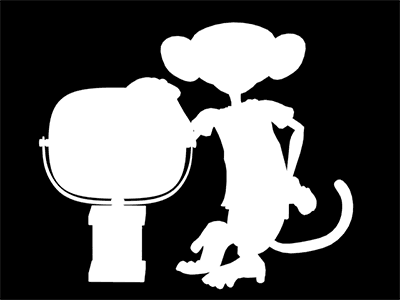
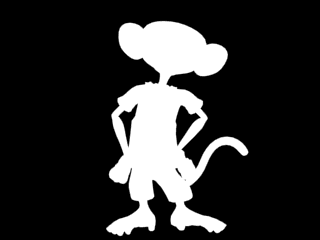
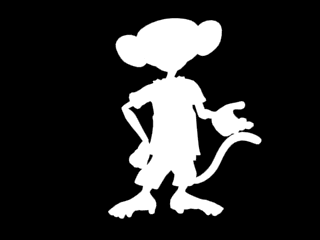
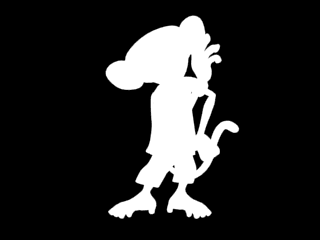

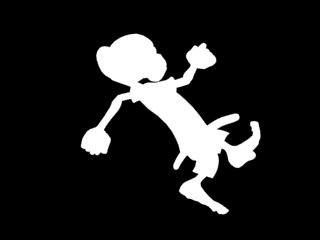
Need advice on good schools for game design...
in Open Forum
Posted
The value of the so-called "game design" schools are mostly hit or miss in terms of quality. Not just from school to school but semester to semester depending on who happens to be teaching (there's often a very high turnover rate) and the dedication and enthusiasm of the other students. The degree you exit with doesn't really have a lot of value other than it showing prospective employers that you can commit to and finish something you started. Students will typically come out of the program with some sort of finished class project and your contribution to it can be very beneficial if it's done well but it can also be a double-edged sword if you have classmates who are not as dedicated as you are. Group projects tend to only be as strong as their weakest link. Read books, get involved with online communities. The best way to show you can make games is to... make games. Simple puzzle and logic games are a great start, board games, card games, pen and paper RPGs, things like that. Good game design can be demonstrated in any media; some of the best designers I know started with or continue making non-digital games. Getting involved with the modding communities is a great next step. Modding an existing game lets you focus on the flow of design without having to worry about things like art and programming (although at least some basic knowledge of scripting languages can be very helpful and useful).
Good luck to your daughter. The industry needs more women.
All the best,